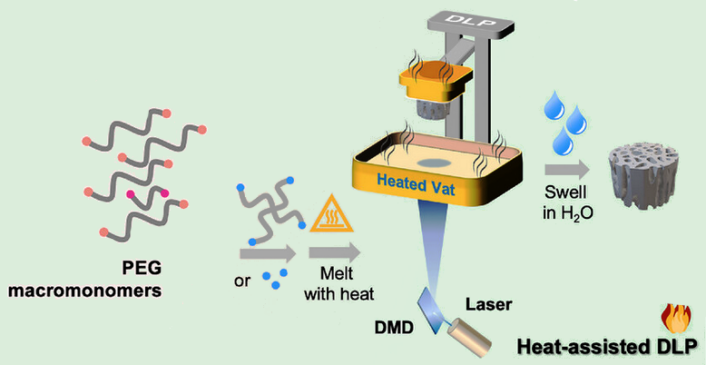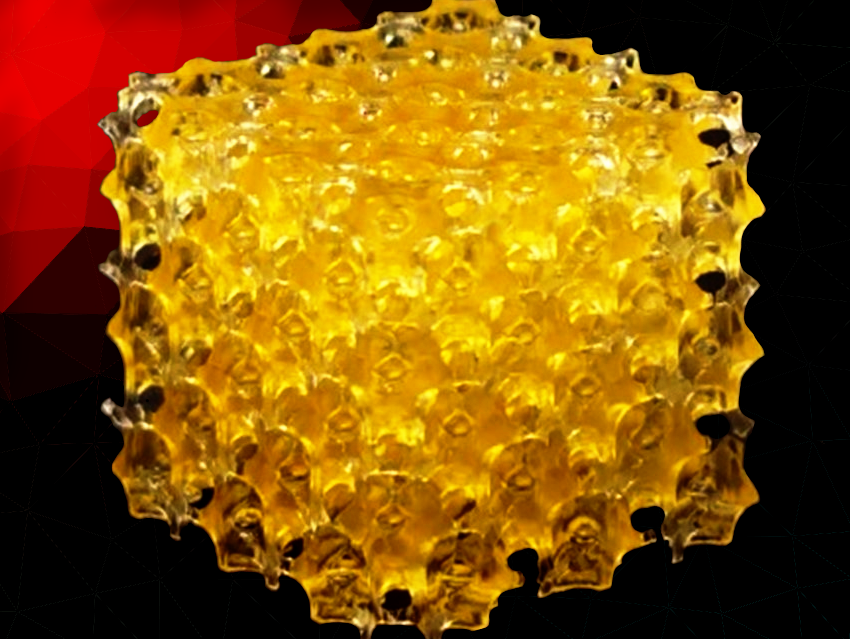3D printing has shown great potential for the manufacturing of hydrogels with complex structure and good bioactivity. One particular method, known as digital light processing (DLP), stands out due to its ability to create objects with superior surface quality and resolution. However, printing mechanically robust hydrogels with complex structures using DLP has proven challenging, especially when working with poly(ethylene glycol) (PEG) hydrogels. This is because conventional DLP printed PEG hydrogels manufactured with commercial acrylated PEG oligomers (e.g., PEGDA 700) are too brittle for practical applications, while PEG hydrogels prepared with high molecular weight PEG photopolymer solutions are often very weak.
Yinyin Bao, Jean-Christophe Leroux, Xiao-Hua Qin, ETH Zurich, Switzerland and colleagues have made advancements in this area by using heat-assisted DLP to achieve high-resolution 3D printing of bioactive PEG hydrogels with enhanced mechanical properties. This is achieved by directly printing melts of PEG macromonomer (MW ranging from 2000 to 20,000 g mol‒1) in the presence of a macromolecular photoinitiator (BAPO-conjugated four-arm PEG), which was developed by the group of Hansjörg Grützmacher, also from ETH Zurich. This is followed by a subsequent swelling process.

By using this approach, the researchers were able to create PEG hydrogels with improved structural accuracy compared to conventional DLP and even tomographic volumetric printing techniques.
Through a dual-macromonomer resin formulation, the team achieved high mechanical strength in the 3D-printed PEG hydrogels, demonstrating compression toughness of up to 1.0 MJ cm‒3. They printed a hydrogel scaffold resembling a bone, with a minimum feature size of less than 100 µm, which was subsequently biofunctionalized for potential application in tissue engineering. The scaffold facilitated the attachment of stem cells and the formation of a monolayer resembling bone-lining cells.
According to the researchers, their work highlights the effectiveness of heat-assisted DLP in fabricating strong PEG hydrogels with intricate 3D structures and good bioactivity.
Tough PEG-only hydrogels with complex 3D structure enabled by digital light processing of “all-PEG” resins,
Safira Noor Anindita, Riccardo Conti, Doris Zauchner, Nevena Paunović, Wanwan Qiu, Marina Green Buzhor, Adva Krivitsky, Zhi Luo, Ralph Müller, Hansjörg Grützmacher, Xiao-Hua Qin, Jean-Christophe Leroux, Yinyin Bao,
Aggregate 2023.
https://doi.org/10.1002/agt2.368




